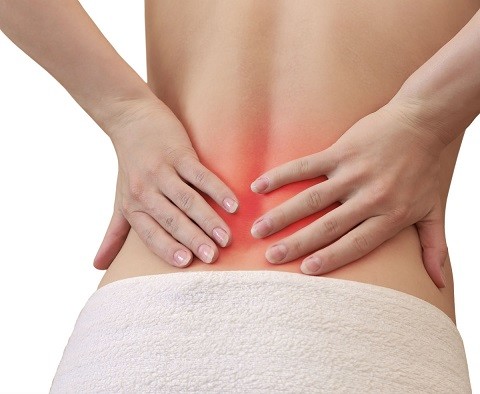Low Back Pain Rehab by London's Best Back Trainer
Do you experience a dull or achy, lower back pain?
Is your back pain confined to one body spot or region?
Does it move around and it varies in intensity or it feels like an electric shock, searing and it travels into your hips, knee and legs?
Jazz provides you with the best and most effective, premium laser sharp customised back pain rehab transformations in London.
This includes full online back rehab service professionally catering for all your lower back injury rehabilitation needs.
What are your main back pain rehab targets and long term rehabilitation goals?
Learn now how Franco, Hayley, Jan, Michaela, Dr Christian NHS, WT police officer, Elizabeth Tiffany Edwards , lawyer M Taylor and Huw completely transformed their life by successfully rehabbing their chronic back pain.
Contact us now through this link.
If you’re one of the brave back-pain fighters, you need to know that every body is different.
Back problems can arise from:
• poor postures,
• slipped discs,
• nerve compression,
• muscle strain and spasm,
• Accidents and different types of injuries
Although proper core strength, self-knowledge and self-care are golden tickets to recovery, there must be a holistic back rehabilitation programme that accurately addresses the cause and tackles your problems from the roots without causing any extra harm.
If you’re looking for the best personal trainers specialising in back problems to guide you through your lower back rehab journey, here’s our unique programme for low back pain rehabilitation online.
Right from home, you can schedule one-to-one live assessment and rehabilitation sessions with Jazz Alessi, the expert online trainer for low back pain rehab who will help you get rid of your back pain forever.
What are the goals of low back pain rehabilitation online?
• Address the cause of the your back pain in a customised manner
• Create a list of realistic short and long-term rehab goals
• Set the proper customised training plan
• Set the proper nutritional plan
• Special approach to help you relieve the pain
• Restore normal range of movements and function,
• Restore strength, balance and good posture
• Prevent pain recurrence
That sounds great, doesn’t it?
BUT, what causes of back pain do Jazz Alessi’s specialty and experience cover?
Jazz is top London expert in back pain rehabilitation, he can professionally deal with your back pain if it is caused by:
• A slipped or herniated disc
• Poor Bad posture
• Strains and sprains
• Muscle spasm
• Spondylosis or degenerative joint disease
• Sacroiliac joint dysfunction
• Sciatica
• Muscle imbalance
If you are looking for the best lower back rehab specialist in London or your diagnosis is not listed above, you can have a FREE CONSULTATION and speak to Jazz.
He can set you the proper programme customised for your diagnosis, X-ray, CT and MRI.
- Does your low back become more painful after prolonged sitting or standing?
- Do you have any muscle spasms, tightness and pain in the lower back area, pelvis and your hips?
- Does your lower back pain shoots down on one or, both legs?
If you have any of these serious low back pain symptoms, keep reading on.
We are experts in lower back pain rehabilitation and sciatica, and created this professional rehab page to help you.
We will show what caused it, what type of back pain is yours, how to testing it getting a laser sharp accurate diagnosis, and more important…
Throughout this page we will show you, how you can get rid of your low back pain!
“My back pain disapeared and I don’t feel stressed anymore. I am sleeping better and I perform better in a very demanding job. Jazz Alessi’s area of specialisation completely covers back pain rehabilitations, and healthy weight loss.”
– Dr Christian H – NHS
Do you live in London, and are suffering from low back pain?
With more than 1million years of productive days lost to back pain in the UK alone, lower back pain is indeed a major problem.
- According to the statistics published by NICE in 2017, 37% of all chronic pain in men is attributed to back pain.
- In women, the percentage is much higher at 44%.(1)
What is your major problem in getting rid of the back pain?
The back problem is huge and unfortunately ever growing.
The main reason for this according to a recent study is the rampant use of unapproved and unscientific treatment techniques to cure back pain for monetary gain. (4)
Lack of consensus on the best practices for the management of uncomplicated lower back pain among clinicians creates confusion in the minds of people.
This prompts them to look for quick fix solutions that do not guarantee complete respite.
Types of grading back pain
Acute low back pain lasts from a few days to 3 weeks. It is self-limiting with no residual loss of function. Self-care helps to resolve the symptoms.
Subacute low back pain is defined as pain that lasts between 4 and 12 weeks.
Chronic back pain is defined as pain that persists for 12 weeks or longer, even after an initial injury or underlying cause of acute low back pain has been treated. About 20% of people affected by acute low back pain develop chronic low back pain with persistent symptoms at one year. In some cases, treatment successfully relieves chronic low back pain, but in other cases pain persists despite medical and surgical treatment. Symptoms of low back pain Low back pain can present in a variety of ways depending on the cause: This is commonly called as sciatica back pain. Long standing cases may present with weakness in the muscles supplied by the sciatic nerve. The arthritic changes are accompanied by muscle spasm in the low back. Movement transitions may be slower Walking, getting in and out of the car or bed is an ordeal. The pain is usually pinpoint over the dimples in the lower back but may radiate to the buttocks or back of thigh occasionally. Forward bent posture may relieve the pain and arching back may increase pain, or just the other way around. A chiropractor or physiotherapist may detect decreased mobility in the affected section of spine
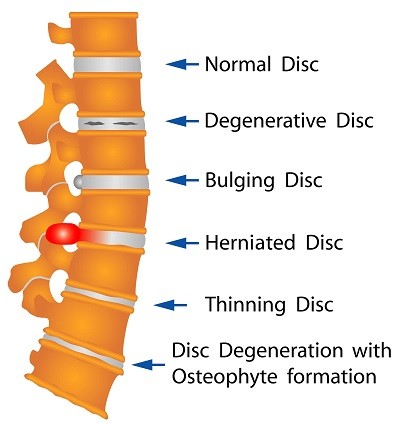
What causes a Back Pain
The vast majority of low back pain is mechanical in nature. Only 1% of cases of back pain in middle age may be due to a serious pathology. (4) The common causes of back pain include:
- Sprains and strains: Ligament injuries or sprains are caused by sudden twisting motions that stretch the ligament.
Muscle tear or strains occur as a result of an activity that overstretches it. Repeated activity like lifting is a major cause of overuse muscle injury. Constant slouched posture overstretches the back muscles resulting in stretch weakness and pain. Over a period of time this leads to anatomical changes, faulty muscle action, chronic fatigue and persistent neck or lower back pain. Reduced disc height and formation of osteophytes (bony outgrowths) may lead to neural impingement causing radiating pain the back of the leg. It may press against the surrounding ligaments and nerves resulting in lower back pain. Bony spurs in a degenerated spine or a prolapsed disc usually cause sciatic nerve compression. “I had 20, one to one rehabilitation personal training sessions in London with Jazz Alessi. During this time, my posture improved tremendously, all of my chronic back pain and back problems disappeared.” – M. Taylor – Lawyer Would you like to regain your back health, and learn for yourself how to get rid of sciatica pain? Contact Jazz now for a commitment free consultation today clicking on this link HERE. There is a noticeable step in the lumbar spine on palpation. In rare cases the vertebrae may shift backwards and is known as retrolisthesis A sudden twist at this joint can injure these ligaments. Faulty biomechanics like anterior or posterior tilt of the ilium with respect to the sacrum or upslip of the ilium on the sacrum may also sprain the ligaments. The violent jolt causes the muscles to seize up. Sustained contracted state causes production of pain causing chemicals which causes more spasm. A vicious cycle of pain-spasm-pain sets in. Violent muscle contraction may also occur in contact sports. A prolapsed disc or a tumour may reduce the size of the spinal canal and compress the nerve roots. Exaggerated anterior pelvic tilt or increased lumbar curve is another reason for persistent back pain. The inside of a healthy bone has small spaces, like a honeycomb. Osteoporosis increases the size of these spaces, causing the bone to lose strength and density. In addition, the outside of the bone grows weaker and thinner. This can lead to fractures of the vertebrae. It is most often seen in elderly women after menopause (linked to lower estrogen levels) or in populations receiving less sunlight. The individual presents with constant pain with knots in the back muscles. The patient develops severe progressive pain and stiffness in the entire spine with reduced rib cage mobility as the disease progresses. A vertebra weakened by infection or reduced calcium levels may also collapse resulting in compression fracture. The Core muscles and PFM work synergistically to influence posture by regulating intra-abdominal pressure and thoracolumbar fascial tension. Weakness in the pelvic floor muscles affects core stability resulting in chronic pain. (9) More serious pathologies of lower back pain include tumour, tuberculosis of the spine, Abdominal aortic aneurysm, infection or autoimmune diseases. Referred pain in the low back may be seen in kidney stones. Sudden weakness in both legs with loss of bladder and bowel control and sensory loss in the anal region is a classic cauda equina symptom requiring immediate surgical attention. Diagnosis of low back pain Most GPs (general practitioners, primary care physicians) will be able to diagnose back pain after carrying out a physical examination, and interviewing the patient. If the pain persists for too long, further tests may be recommended. The radiological investigations like X-Ray and MRI help to detect any bony abnormalities like fracture or a prolapsed disc. Enhanced CT or Myelograms that use injectable dyes are helpful in demarcating any space occupying lesions or ruptured arteries along the spinal cord. Electro-diagnostic procedures may be recommended in chronic cases of nerve compression to understand the prognosis. Other tests like Ultrasound are being used now a days to pick up ligament or tendon injuries. Physiotherapists, Osteopaths, Chiropractors and Sports Injury Rehabilitation Specialists rely more on detailed patient history, physical examination and special tests to evaluate back pain. How a muscle or a joint feels’ below the fingers gives the most accurate diagnosis to an expert clinician. It helps to identify: Active/passive ROM and repeated movements help to diagnose muscle related pain. Special tests such as Slumps test, FABER test, Gaenslen’s test, Straight leg raising and Crossed SLR tests etc, help to diagnose back pain due to reduced neural movement or muscle/joint pathology and disc involvement respectively. Manipulation of the lumbar spine gives crucial clues regarding facet joint dysfunction. Evaluation of MRI, posture, muscle strength and tightness reveals pain that may be due to muscle dysfunction or trauma. More often, it is these muscular imbalances that are the root cause of pain. The findings on investigation may be purely coincidental or asymptomatic. (5) “I used to have back pain but, thanks to Jazz Alessi’s customised strengthening, stretching, breathing, back exercises, postural movements and the individualised programme he designed for me I don’t have any spine or back pain anymore. I’m now able to have a very intense workout and I took my fitness to the next level.” – W. T. – London Metropolitan Police Contact Jazz now for a commitment free consultation today, by clicking on this link HERE.
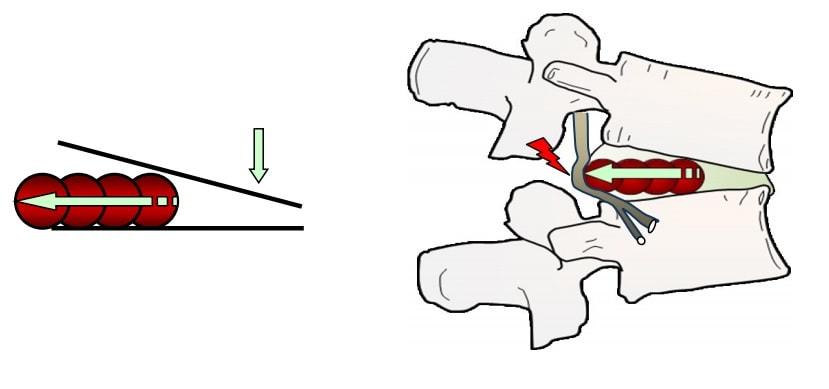
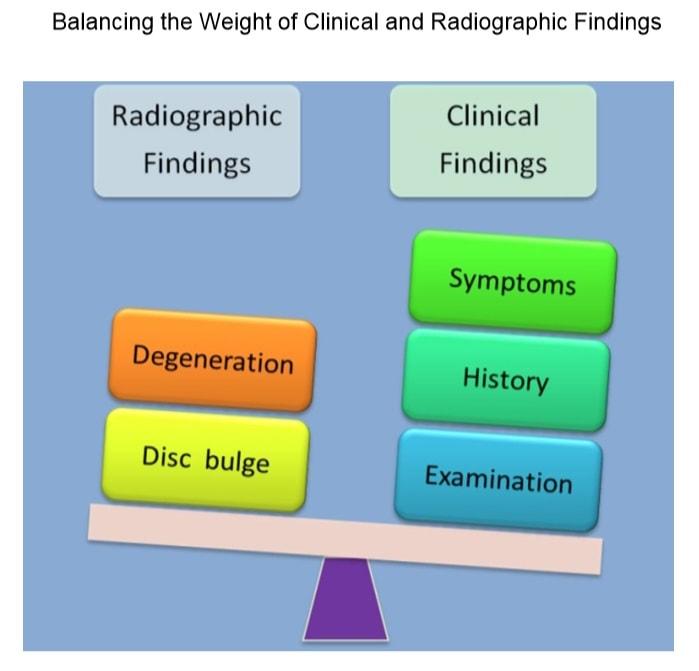
Treatment for Back pain
Medical Treatment
Medical intervention is usually directed at reducing pain and muscle spasm through analgesics, NSAID’s and muscle relaxants.
Researchers have advised to use low doses of safe drugs for the shortest periods. Opioid analgesics prescribed for chronic pain or fibromyalgia are highly addictive and should be prescribed with caution. Drugs like paracetamol, ibuprofen are most commonly prescribed for acute lower back pain in the UK. Surgery Treatment This option should only be considered if all other therapies fail. Surgeries do not guarantee pain relief instead may result in loss of flexibility. Certain surgeries help to repair compression fractures by using glue cement. Corrective surgeries are aimed at correcting structural scoliosis or limb length deformity that cause lower back pain. In case of disc prolapse or nerve root compression, the surgeon may recommend removing part or whole of the disc and widening the foramen through which the nerve exits the vertebral column. In cases of multiple compression fractures or multiple disc prolapse, the surgeon may consider fusing adjacent vertebrae to provide greater stability. NON-MEDICAL TREATMENT Recent studies are recommending the use of safer and non-invasive ways to rehabilitate acute and chronic lower back pain. As the bio-psychosocial model of pain shows how one’s state of mind affects pain perception, CBT sessions that motivate people to adopt a more active lifestyle have proven beneficial. (10) These sessions encourage people to give up bed rest, and overcome the fear of movement. The sessions also help patients to cut down on the use of medications. Many clinicians have also used acupuncture and dry needling for the management of acute and chronic low back pain. Though this technique has not found a place in the NICE guidelines it has helped to provide symptomatic relief in persistent back pain cases when used with other treatment techniques. The effects are short term. (11) Customised Pilates exercises is gaining popularity among patients and Physiotherapists due to its wonderful effects on the core muscles. (12) It has been seen that weak core muscles are a major reason for recurring or persistent low back pain. Jazz Alessi, a 2nd generation Pilates Personal Trainer in Central London and an elite personal trainer for back pain finds authentic Pilates extremely beneficial for his clients. He combines customised back pain exercises with perfectly modified Pilates technique to provide painless movement in just 6 – 12 sessions. Customised back pain exercises, and one to one Pilates works well in all cases of back pain including disc prolapse and spondylolisthesis. Yoga strengthens the low back extensors and lumbar-pelvic – hip muscles. It’s a great way to get rid of the nagging back pain the natural way but, also increases the risks for a herniated disc and sciatica thus, in the case of back pain or injury Yoga exercises will not be enough whilst, it must be fully customised. As an elite personal trainer for back pain and exercise specialist, Jazz Alessi blends selected or modified Yoga with customised low back stabilisation exercises to maximise the benefits of both. His clients in central London, simply enjoy the triple benefits of Yoga, Pilates and modified exercises designed by Jazz in the comfort of their home. All it takes is a Pilates, or Yoga mat! Cortisone injections are recommended by some clinicians to manage chronic or persistent lower back pain. However, the effects are short term and not directed towards resolving the root cause. “Jazz made all the difference I needed and I’m so happy now that my back pain is completely gone. My posture and my core are so much stronger now. Alessi Jazz was born to train and he is 100% focused at all times.” – Emma Choli – International marathon runner Exercise therapy and Customised Back Rehabilitation: Physical therapy has gained a lot of support from clinicians in the past few years for rehabilitation of lower back pain. Exercises are the back bone in all types of back pain injuries and back pain rehabilitation. Among other things, a customised personal training programme for back pain rehabilitation could include: “I wanted to improve my fitness level, gain more energy and lose weight while, correcting my posture and getting rid of my severe back pain. Once we start training Alessi was always available and answered all the questions and back rehabilitation queries I had. I achieved everything I wanted and I went beyond my goals. My posture is so much stronger and I don`t feel any back pain anymore.” – Alless – Fashion designer Would you like to regain your back health, and learn for yourself how to get rid of sciatica or lower back pain? Contact Jazz now for a commitment free consultation today, by clicking on this link HERE. Need of the hour today There is usually a disruption in the way the components of the back (the spine, muscle, intervertebral discs, and nerves) move. The condition resolves completely through self-care and active lifestyle. (2) Recommending expensive investigations and persuading patients for hi-tech surgeries amounts to medical malpractice. (4) A radiological diagnosis may not always be symptomatic. Having worked with over a 600 cases of low back pain over the past 20 years, expert personal trainer in Central London Jazz Alessi believes that an MRI finding of disc prolapse need not always be the reason for pain. (6) The reason may lie somewhere else. (5) According to the latest research published in the journal of rehabilitation medicine, lower back pain is distressing mainly because of its unpredictability and possibility of recurrence. (3,4) “At 40, I was enjoying life working as a nursery nurse. One day I experienced the most unimaginable pain of my life. All I had done was lift up a crying child. The pain was agonizing, I couldn’t move. It was like my back had all seized up… Nothing I did relieved my pain… A regular activity can also become painful all of a sudden….” – Tracey This fear makes people avoid movement. Avoidance of movement results in more muscle stiffness and more pain. Jazz Alessi, the most sought after elite personal trainer in Central London, trains and coaches you to eliminating this fear. Jazz helps his clients make sense of their pain. Explaining the ‘why’ and ‘how’ of the pain helps patients put pain in the right perspective. Jazz has learnt through his long term experience that individuals are more compliant to rehab once they understand how it will help them. Low back pain can have multiple causes and each of them must be examined by your sports injury medical doctor before deciding any type of treatment options. (4,5) The widely popular bio-psychosocial model of pain and disability must be incorporated in all cases of low back pain. It has been recommended that 150 minutes of exercise per week is extremely beneficial to build up cardiac and muscular endurance. Regular exercise keeps muscles fit to resist the pressures of any unexpected surge in activity. This is just one of the reason why Jazz Alessi elite personal trainer in London, advocates regular back pain exercises for all his London clients. As a rehabilitation expert, Jazz helps you improve your mobility and early return to normal activities fighting back pain efficiently. Prolonged bed rest causes imbalances, tightness and muscle weakness. Poor muscle strength results in faulty movement patterns and incorrect muscle action. These eventually lead to increased pain. Being off work results in social isolation and depression which aggravates pain. “Working out at the gym was my stress buster. I was doing my usual Abs routine, when I got a sharp shooting pain all the way down my right leg. Sciatica ! And that I thought was the end of my gym routine. These exclusively tailored exercises and fitness routine helped me to return to the gym in just 3 months. He helped me understand my spine better. He taught me how to move effectively and efficiently and supervised me throughout. It’s been a year since and I haven’t had another episode of sciatica”. An episode of low back pain only reminds you that you need to treat your spine better. You need to analyse your daily activities and identify the faulty movement. As an expert personal trainer in London Jazz has worked with top CEO’s, sports persons, lawyers, medical doctors and TV personalities with varied and demanding job profiles. Advising them on their movement deficits and rectifying muscular imbalances and addressing postural dysfunction to heal their back has gained him immense popularity. He believes in bespoke programmes and hands on approach. Using customised exercises, yoga and Pilates, Jazz achieves low back pain relief in just 6 – 12 sessions. His techniques find a strong support in the 2017 NICE guidelines for back pain management. It is the most common cause of job-related disability and a top reason for missed work days. It accounts for 11% of the disability in UK alone. (4) This suggests that we must focus more on prevention. Adoption of correct posture, practising correct exercises, movements, lifting techniques and improving workstation ergonomics goes a long way in preventing recurrent back pain. Among other successful back recovery strategies and checks we use, we are also measuring your back rehabilitation programme targeting specific metrics (see the picture below) of your spine function: “What Jazz does is prepare a customised personal training programme, for you as an individual. The customised exercises Jazz designed for me helped me to completely get rid of my back pain, tension in my shoulders, and hip pain and increased my body coordination, flexibility and overall improved the range of movement throughout my body. I’m also about two stone lighter now than I was when we first met.” – Beverley Sage – ex singer – Artist Would you like to regain your back health, and learn for yourself how to get rid of sciatica and lower back pain? Contact Jazz now for a commitment free consultation today, by clicking on this link HERE. Back pain rehab by Jazz Alezzi As an elite personal trainer and rehabilitation expert, I am passionate about recovery after injury, and designing the most suitable customised exercises for you as a client. I never use a ‘one hat fits all approach’. I design very comprehensive and effective rehab programs for each of my clients. In my 20 years of experience as a back-pain rehab specialist in Central London, I have come across a large variety of back pain cases. In my opinion, as an exercise physiology specialist and rehab expert, majority of LBP cases stem from dysfunction of the trunk muscles including the hip and the pelvis and this is exactly what most personal trainers specialising in back problems don’t get it. Delayed activation of these muscles during movement, result in unwanted pressure on the disc and ligaments. Overtime, this presents as pain during movement. The individual selectively stops performing the painful movements causing further deconditioning. As a personal trainer in Canary Wharf, I work closely with my clients working in an office based job to reduce and eliminate back pains. I help them overcome fear and explain the ill effects of limited mobility. After conducting a thorough back injury assessment, I note the weak, tight and overstretched muscle groups. I also look at shoulder, hip movement and foot. Since the trunk forms a link between the shoulder and hip in the kinetic chain, an incorrect scapular or pelvic movement may percolate through the chain resulting in lower back pain. I also perform work place assessments for my London based clients. Identification of my client’s functional limitation helps me to set realistic goals As a certified injury rehabilitation specialist, I customise for you using the most effective strengthening exercises for the low back muscles with stretching of the tight muscles achieve full range of motion throughout the kinetic chain. I personalise all exercise, movements and lifestyle. This helps me to provide an effective and efficient support, to going beyond my clients’ goal. I also use modified Pilates and Yoga to improve mobility and core strength around the lower back. As a long term certified nutritionist, I also advise my clients on weight loss diets if overweight and obesity is an aggravating factor of their lower back pain. I believe in personalised nutrition for optimum spinal health. I take time and formulate your perfectly customised personal training programme. This incorporates the most effective, modified exercises from Pilates, Yoga, body conditioning, Martial arts, gymnastic ensuring your programme is entertaining providing you with the best holistic approach for a very effective and long term back pain relief. Your customised low back rehabilitation programme professionally supports you moving again safely in all three plans of motion maximising your chances to maintain optimum back health in a long term. Some of the approaches and causes I mentioned above are taught through my low back rehab curriculum rehab courses for personal trainers specialising in back problems. Are you living in greater London, or east London, and are looking for the best Rehabilitation Elite Personal Trainer in Canary Wharf? All you will need is a Pilates mat at home or office or even a nearby park and I will bring with me all the equipment required. I Will Train You At Your Convenient Time and Place – At Your Greater London Location! “Thank goodness, I found Jazz. I used to have lots of postural problems and serious back pain, and of course I was very worried about this. His back rehab training was perfectly customised to my goals and needs, and since training with him I have not had any regular back pain at all. Jazz training helped me to regain my back balance, and to get rid of my back pain.” – Nerea Carrion – Entrepreneur
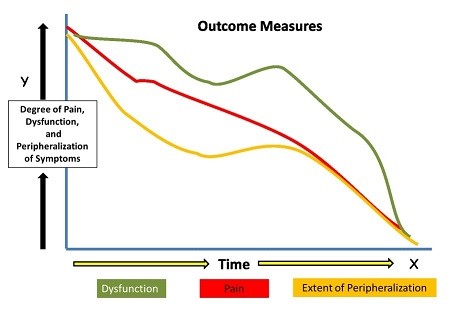
Are you ready to say goodbye to back pain London’s most common cause of disability and work absenteeism?
As a long-term expert personal trainer for back pain, I can confidently tell you that to get rid of your pain, you need to clearly understand the reason behind it and what caused your back pain in the first place.
For every personal trainer back pain is not the same in all clients. For instance, your back pain might be caused by repetitive movements, poor posture, spine overload, muscle spasm, muscle weakness, body asymmetries, compensatory mechanisms, disc problems or spondylosis (inflammation of the vertebrae).

Thus, it is important to work closely with the best personal trainer back injury – long term rehab trained background who can successfully deal with different types of back injuries and problems.
Do you have a back pain diagnosis?
Talk to Jazz Alessi about your symptoms and learn more about effective back pain rehab.
FAQs
Is walking good for lower back pain?
Walking can help you improve blood flow, lower inflammation, improve your posture and overall muscle strength. However, it can also increase your symptoms and put more load on your spine. It all depends on where you are at throughout the recovery process. For this reason, always consult your rehab personal trainer to find out when is the best time to start walking, how long you can walk and what is the best walking intensity in your particular case.
What is prevention and rehabilitation low back pain?
Customised back pre-rehabilitation prevention programmes will help you dramatically improve your back pain and, in many cases, prevents further complications like disc herniation and nerve entrapment by stabilising your spine and strengthening your deep core muscles.
How does an exercise program help with low back pain rehabilitation?
Customised rehab exercises are a cornerstone in back pain rehabilitation. With different types of exercises, you can improve your spine health and improve your back pain symptoms.
For example, strength training will improve your core strength and stability. Aerobic training will help you lose weight and decrease the load on your spine. Relaxation, customised Pilates, Yoga and flexibility training will help you improve your posture, muscle spasm and tissue restriction.
Can I still exercise with low back pain, or should I rest?
It depends on the type and cause of back pain; Resting is only recommended in the acute stage of an injury where you need to allow for the inflammation to subside. This takes only 2-4 days and it is recommended to start exercising right away after rest to restore tissue flexibility and muscle strength. You must exercise in a customised manner.
Are there any exercises to avoid when rehabilitating low back pain?
For sure – 100%! Depending on the cause and origin of your back pain, your long term back rehab personal trainer will ask you to avoid specific exercises that might worsen your symptoms or increase your back pain. This is only possible after completing a proper and thorough assessment of your back problem.
References
- https://www.ninds.nih.gov/Disorders/Patient-Caregiver-Education/Fact-Sheets/Low-Back-Pain-Fact-Sheet
- https://www.nice.org.uk/news/article/nice-publishes-updated-advice-on-treating-low-back-pain
- Samantha Bunzli, Anne Smith, Robert Schütze, Peter O’Sullivan “Beliefs underlying pain-related fear and how they evolve: a qualitative investigation in people with chronic back pain and high pain-related fear” BMJ Open 2015;5: e008847. doi: 10.1136/bmjopen-2015-008847
- https://www.theguardian.com/society/2018/mar/21/lower-back-pain-being-treated-badly-on-a-global-scale-study-says
- Carragee EJ, et al. “Discographic, MRI and psychosocial determinants of low back pain disability and remission: a prospective study in subjects with benign persistent back pain.” Spine J. 2005 Jan-Feb;5(1):24-35.
- http://www.patrickrothmd.com/herniated-disc/
- Hans-Raimund Casser, Susann Seddigh, Michael Rauschmann “Acute Lumbar Back Pain :Investigation, Differential Diagnosis, and Treatment” Dtsch Arztebl Int. 2016 Apr; 113(13): 223–234.doi: 10.3238/arztebl.2016.0223
- Michael Schneider, “Back Pain as a Signal That Something Needs to Change” Dtsch Arztebl Int. 2016 Aug; 113(33-34): 563. doi: 10.3238/arztebl.2016.0563a
- https://www.physio-pedia.com/Low_Back_Pain_and_Pelvic_Floor_Disorders
- https://www.nhs.uk/news/medical-practice/cbt-sessions-help-back-pain/
- http://www.cochrane.org/CD001351/BACK_acupuncture-and-dry-needling-for-low-back-pain
- 12.Aladro-Gonzalvo AR1, Araya-Vargas GA, Machado-Díaz M, Salazar-Rojas W.J “Pilates-based exercise for persistent, non-specific low back pain and associated functional disability: a meta-analysis with meta-regression.”Bodyw Mov Ther. 2013 Jan;17(1):125-36. doi: 10.1016/j.jbmt.2012.08.003. Epub 2012 Sep 16.
- Cramer H1, Lauche R, Haller H, Dobos G. “A systematic review and meta-analysis of yoga for low back pain.” Clin J Pain. 2013 May;29(5):450-60. doi: 10.1097/AJP.0b013e31825e1492.
- Sadler SG, Spink MJ, Ho A, De Jonge XJ, Chuter VH “Restriction in lateral bending range of motion, lumbar lordosis, and hamstring flexibility predicts the development of low back pain: a systematic review of prospective cohort studies.” BMC Musculoskelet Disord. 2017 May 5;18(1):179. doi: 10.1186/s12891-017-1534-0.
- Welch N, Moran K, Antony J, Richter C, Marshall B, Coyle J, Falvey E, Franklyn-Miller A “The effects of a free-weight-based resistance training intervention on pain, squat biomechanics and MRI-defined lumbar fat infiltration and functional cross-sectional area in those with chronic low back.” BMJ Open Sport Exerc Med. 2015 Nov 9;1(1):e000050. eCollection 2015.
- Cooper NA, Scavo KM, Strickland KJ, Tipayamongkol N, Nicholson JD, Bewyer DC, Sluka KA.“Prevalence of gluteus medius weakness in people with chronic low back pain compared to healthy controls.” Eur Spine J. 2016 Apr;25(4):1258-65. doi: 10.1007/s00586-015-4027-6. Epub 2015 May 26.
- Laird RA, Gilbert J, Kent P, Keating JL. “Comparing lumbo-pelvic kinematics in people with and without back pain: a systematic review and meta-analysis.” BMC Musculoskelet Disord. 2014 Jul 10;15:229. doi: 10.1186/1471-2474-15-229.
- Kovácsné Bobály V, Szilágyi B, Makai A, Koller Á, Járomi M. “Improvement of lumbar motor control and trunk muscle conditions with a novel low back pain prevention exercise program”. Orv Hetil. 2017 Jan;158(2):58-66. doi: 10.1556/650.2017.30640.
- Bhadauria EA, Gurudut P. “Comparative effectiveness of lumbar stabilization, dynamic strengthening, and Pilates on chronic low back pain: randomized clinical trial.” J Exerc Rehabil. 2017 Aug 29;13(4):477-485. doi: 10.12965/jer.1734972.486. eCollection 2017 Aug.
- Hodges, Paul W. B; Richardson, Carolyn A. “Inefficient Muscular Stabilization of the Lumbar Spine Associated With Low Back Pain: A Motor Control Evaluation of Transversus Abdominis” Spine: November 15th, 1996 – Volume 21 – Issue 22 – p 2640–2650




